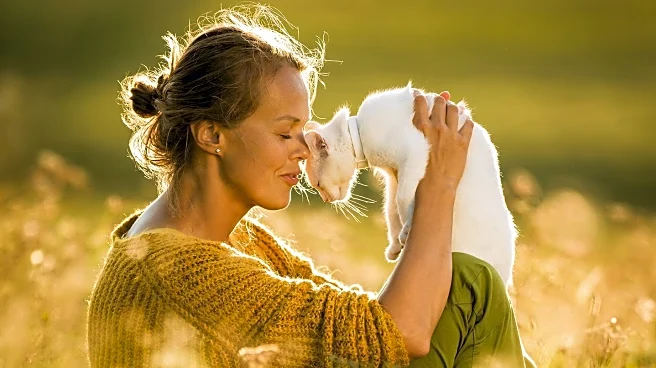What's Happening?
A viral TikTok video has brought attention to a controversial incident involving a dog that died after being exposed to cleaning chemicals. The dog's owner claimed that the veterinarian refused to treat the pet without first conducting a parvo test, despite
the dog's critical condition. The incident has sparked widespread debate online, with many users expressing outrage over the veterinarian's decision. Dr. Carly Fox, a senior veterinarian, explained that veterinarians can refuse to see patients if they do not have an appointment or if the practice is not equipped to handle the case. Dr. Nita Vasudevan highlighted the dangers of common cleaning products to pets, advising the use of pet-safe alternatives.
Why It's Important?
This incident underscores the critical need for clear protocols in veterinary practices regarding emergency care and the handling of potential toxic exposures. The refusal to treat the dog without a parvo test raises ethical questions about the prioritization of procedures over immediate care. The situation highlights the importance of pet owners being informed about the risks of household chemicals and the necessity of having access to emergency veterinary services. The public reaction reflects a growing concern over animal welfare and the responsibilities of veterinary professionals in emergency situations.
What's Next?
The incident may prompt discussions within the veterinary community about emergency care protocols and the balance between procedural requirements and immediate treatment needs. Pet owners might become more vigilant about the products they use at home and seek to establish relationships with veterinarians who can provide emergency care. The case could also lead to increased advocacy for clearer guidelines and training for veterinarians in handling emergency situations involving toxic exposures.
Beyond the Headlines
The broader implications of this incident may include a reevaluation of the ethical responsibilities of veterinarians in emergency situations. It could also lead to increased public awareness about the potential dangers of household chemicals to pets and the importance of using pet-safe products. This case highlights the need for better communication between pet owners and veterinary professionals to ensure the well-being of animals in critical situations.














